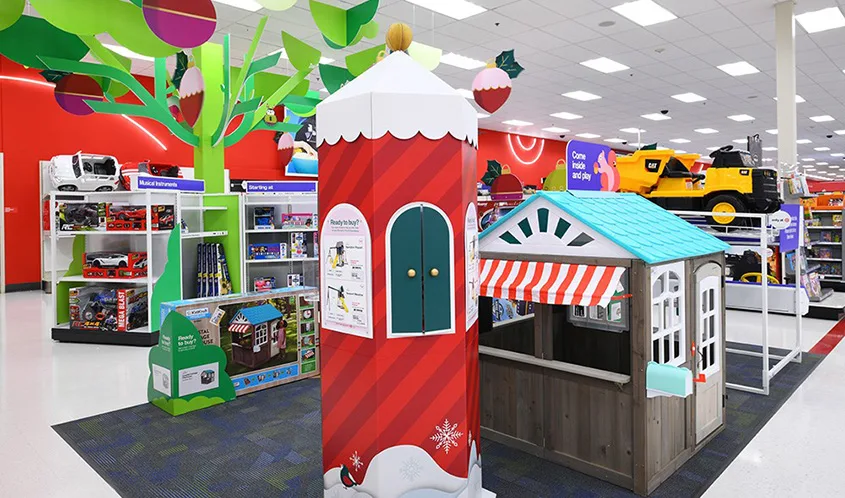The holiday season wasn’t quite as jolly as Target expected.
The Minneapolis-based retailer reported sales that were softer than forecasted through the truncated holiday season. Comparable store sales for November and December rose just 1.4% versus a 5.7% increase during the same period in 2018.
“After two strong holiday seasons in toys, our growth was essentially flat,” says Target CEO Brian Cornell. He notes that according to data from the NPD Group, Target continued to grow market share in the category despite the slowdown.
Flat sales in toys may raise eyebrows within the industry as to the value of Target’s partnership with Tru Kids Brands. Since October, Target has been powering sales through the Toys “R” Us (TRU) website. Consumers browsing the site — which maintained strong traffic levels through the TRU bankruptcy — can click “Buy Now at Target.com” to be linked to the same product page at Target to complete their purchase. Additionally, Target is powering online sales at the two new TRU experiential retail stores that recently opened in Houston, Texas, and Paramus, New Jersey as part of a larger plan to reimagine the brand.
The company also partnered with Disney for Disney Store shops in select locations.
Sales increases in categories such as apparel, food and beverage, and beauty was offset by notable declines across hardlines, including a 3% drop in home goods, and a 6% decline in electronics. While not mentioned specifically, electronics —a crucial category for holiday sales — may have taken a hit due to tariffs that went into effect on electronic products and components last year, resulting in price increases on certain items.
Comparable digital sales grew 19%, driven largely by same-day fulfillment services (Order Pick Up, Drive Up and Shipt), which together grew more than 50% versus the same period last year.
Despite the rocky season, Target still expects to report growth when the company reveals its Q4 and full-year earnings in March.

